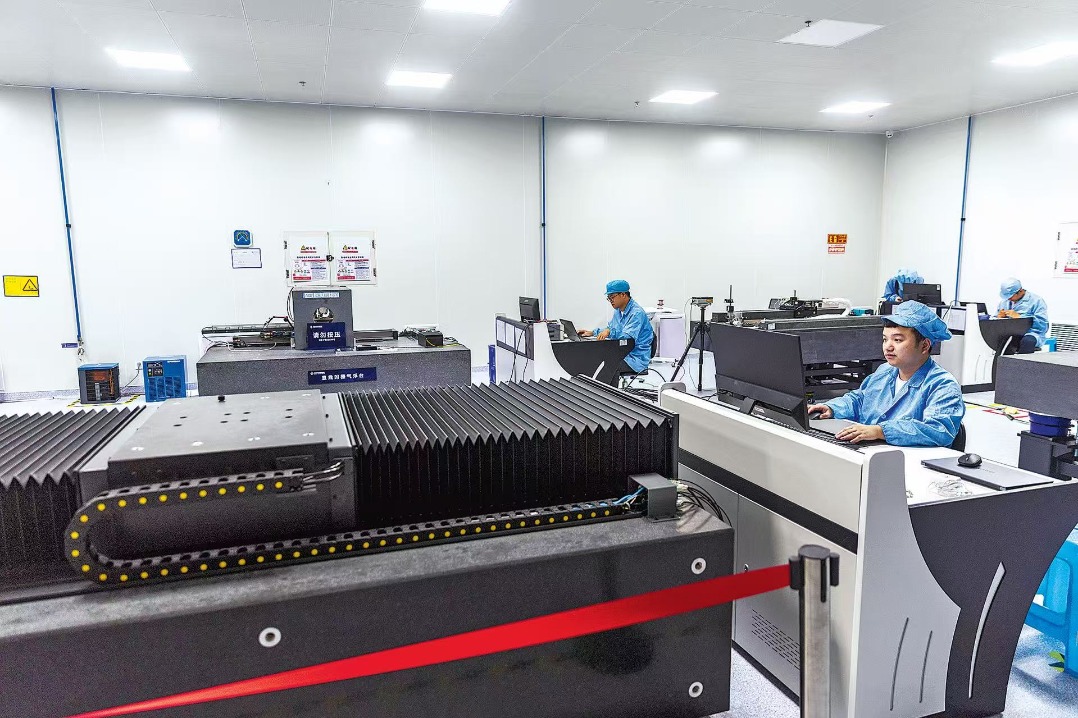Cross-boundary Payment Connect system set to boost Hong Kong's financial role






The milestone Payment Connect program launched in China on Sunday offers a more convenient and cost-effective solution for cross-boundary transactions, said experts and residents, who highlighted its significance in boosting connections, promoting the internationalization of the renminbi and reinforcing Hong Kong's position as a financial hub.
One expert envisioned broader applications of the mechanism in the Macao Special Administrative Region, as well as in member economies of the Association of Southeast Asian Nations and the Middle East, which would further enhance economic and financial integration in these regions.
According to the Hong Kong Monetary Authority, the Payment Connect program recorded 25,900 transactions on its first day of operation on Sunday. Some 19,000 transactions, with an average value of 3,100 yuan ($430), had flowed south from the mainland to the Hong Kong Special Administrative Region as of 6 pm on Sunday.
Payment Connect was jointly launched by the People's Bank of China and the Hong Kong Monetary Authority to strengthen efficiency in cross-boundary payments. The first group of institutions participating in the program includes 12 banks, six of which are on the mainland and six in Hong Kong.
Efficient method
By using Payment Connect through mobile or online banking channels, residents can make cross-boundary remittances by simply entering the recipient's mobile number or account number. They can choose to use either the RMB or the Hong Kong dollar as the receiving currency.
For remittances from Hong Kong to the mainland via Payment Connect, senders need a Hong Kong identity card, and they face a daily limit of HK$10,000 ($1,275) and an annual cap of HK$200,000. For transfers from the mainland to Hong Kong, senders must have a mainland identity card, and the annual limit is $50,000.
Another highlight of the program is its support for cross-boundary payments between individuals and institutions in specific scenarios, such as paying tuition fees and medical expenses, or for the distribution of salaries and subsidies.
The Bank of Communications, which is one of the six Chinese mainland banks participating in the program, said that Payment Connect has addressed the problems of traditional cross-boundary payments such as complicated procedures, high costs and long settlement terms.
The renminbi's application in cross-boundary scenarios will also be enriched by the new program, while Hong Kong's positioning as a global offshore RMB business hub will be further consolidated, they said.
Wang Pengbo, a senior analyst at market consultancy Botong Analysys, said a major step forward in the Payment Connect program is not having to set up a separate account or rely on a third-party institution.
Payment and clearance systems in both places can be used directly, which will lower the usage threshold and transaction cost to a great extent, Wang said.
As the program supports the flow of the renminbi and the Hong Kong dollar, the recognition and use of both currencies will be promoted in retail scenarios, which will also pave the way for connectivity and mutual recognition between the Chinese currency and other currencies, he added.
Xiao Feifei, chief banking analyst at CITIC Securities, said that such a payment mechanism is likely to be expanded to Macao, and even ASEAN and the Middle East, after taking hold. A proliferation would help to create a cross-regional, real-time payment network, facilitate the cross-border use of the RMB and promote regional economic and financial integration, she said.
HSBC is among the first banks in Hong Kong to participate in Payment Connect. According to Luanne Lim, the bank's CEO for Hong Kong, the demand for seamless cross-boundary solutions has never been greater, as mobility between Hong Kong and the Chinese mainland increases. This can be seen in initiatives such as the Northbound Travel for Hong Kong Vehicles program and the multi-entry permits for residents of Shenzhen, Guangdong province.
Deeper connection
Financial cooperation between the Chinese mainland and Hong Kong has been deepened in the past few years, including through the launch of the Stock Connect, Bond Connect, Swap Connect and Cross-boundary Wealth Management Connect programs.
Similar to past connectivity initiatives, the Bank of China (Hong Kong) is a popular choice among individuals and organizations using the Payment Connect program. It completed various types of transactions under the program on Sunday, such as personal remittances, salary disbursements and fee collections.
Chow Kwok-cheong, general manager of the personal digital banking products department at Bank of China (Hong Kong), expressed confidence during a Hong Kong radio program that both southbound and northbound cross-boundary payments will increase, given the substantial consumption demand of Hong Kong residents on the mainland and the desire of people from the mainland to access Hong Kong's education and medical services.
With the program, a Shenzhen resident surnamed Fang quickly transferred 10,000 yuan to her daughter studying in Hong Kong. Previously, she needed to exchange renminbi for Hong Kong dollars before making the transaction, and the process took at least half a day.
One Hong Kong resident who was among the first users of the program said that Payment Connect can save Hong Kong people traveling to Shenzhen a lot of hassle. Previously, he had to remind himself frequently to transfer money in advance to his mainland account before visiting Shenzhen. Now the process can be done anytime and in a more convenient way.
































